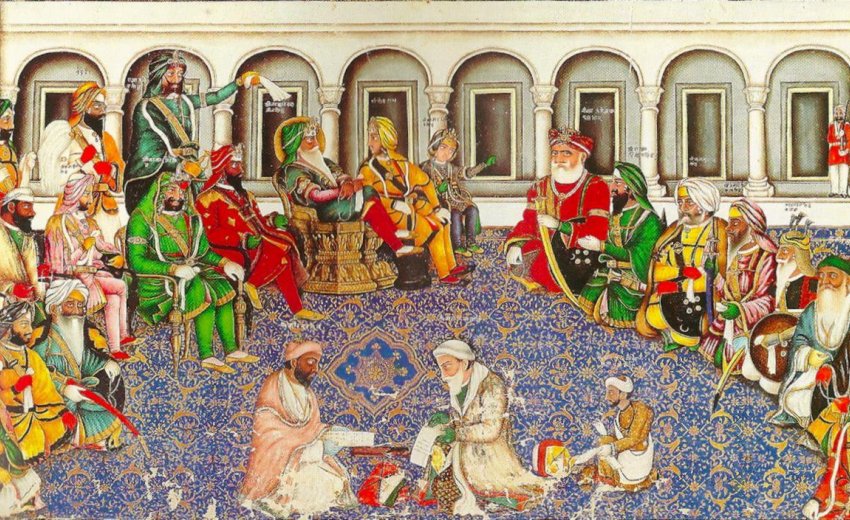In the United States, we are just emerging from an extraordinary political season, almost a circus. History teaches us, but more often by irony than by straight forward sermons and narratives. It repeatedly offers models of political and social behavior and discourse that we could profitably adopt and just as many, if not more, that are better shunned. But human societies have sacrificed many lives and much capital defending the indefensible or running away from what we should own.
Perhaps we are hardwired for such behavioral perversity and idiosyncrasy. It doesn’t surprise me that this is the way it was in old, ancient prehistoric times but such attitudes persist and thrive today.
That an army runs on a vertical administrative organizational structure is no surprise; this is natural to its mission and the associated high stakes. But think a moment about our political institutions. They, too, often have a vertical structure where authority rests at the top of the pyramid and trickles downwards; diminishing progressively in amount, power, and meaningful content as it descends. We often see that the head of a government is respected and even revered; the common citizens who elected the head are ignored as if they never existed, except at elections if there are any.
This is so even though in democratic institutions all power emerges from We the People. It is a principle that is treasured, worshipped in theory, and just as equally ignored in practice.
That’s why the unending debate and controversy on what is or is not the bailiwick of the government, and when and how big government risks becoming too big and too powerful to remain responsive to the common people. Also relevant is how the authority of governmental structure is shared by its institutions. And keep in mind the separation of powers between three semi-autonomous components, the Executive, Judiciary, and Legislative branches; this is how it comes to us in the United States.
At least in the United States, the law (the Tenth Amendment) very precisely delineates the powers that rest with the federal government; all else not specifically ceded to it belongs to the states. An additional redeeming feature is that there are periodic elections where the common folk can render meaningful judgments on the governing structures, even if the elections are not always totally honest and the process, at times, is flawed as well as less than transparent. Just watch the political shenanigans and skullduggery across the United States these days now that a presidential election has just concluded.
Many legal scholars convincingly argue that the Tenth Amendment is the most important part of the U.S. Constitution. Keep in mind that patriotic stalwarts like Samuel Adams and Patrick Henry who supported American independence refused to ratify the Constitution because they worried that it curtailed too many of the rights of states and the people in favor of the federal structure; in other words, they feared concentration of power at the top.
Religions, on the other hand, are structurally and functionally designed to be different from government, but how do they function in real life?
Their raison d’être is the people, but paradoxically they often become the most opaque, centralized, and authoritarian human institutions, almost disconnected from the lives and feelings of their ordinary followers. Just look at the bureaucratic hierarchy of the Roman Catholic Church as an example of one that cedes little, if any, decision making voice or authority to lay people — the very people for whom the Church exists. I absolutely don’t mean to single out this church; except for minor differences, most religious institutions across the world appear to be almost equally closed shops. I also must concede that the Roman Catholic Church is struggling mightily these days to open the black box and let in some light and fresh air.
Religions start from ground that is common to all human societies, whether social, spiritual, or political. Most religions come with a Master or Prophet at the outset who bequeaths to us a divine visionary map of human society as it ought to be. There is no question that religious teachings and practices define a community and then they become the traditions — the glue — that unites a people. This is how practices become sacred. Thus, is defined the religious message for which a people willingly lay their heads on the line. Theirs is not to reason why!
This produces fences between religions that hopefully do not solidify into walls that seal human communities from each other. But just look at them in the real world; marvel at how well they morph into hermetically sealed compartments with crazy glue defining their points of intersection.
Most often the beginning of every religious movement is hierarchal and information flows vertically from the founder to the follower as in the learning of any basic skill or art in grade school. Yet, no matter the topic — religion, science, or art — the rare but excellent teacher will mix this vertical dialogue with horizontal conversation for effective communication and to promote a life of the mind.
Think of just one of many examples that I could offer from the life of Guru Nanak, the Founder-Guru of Sikhi. One bright and early morning Guru Nanak appeared at a wildly popular Hindu center of pilgrimage, waded into the river alongside them, and started splashing water as the pilgrims were doing — but in the opposite direction. They were splashing water eastwards towards the rising sun and were horrified at Guru Nanak’s behavior. When asked why he was splashing water in the wrong direction, the Guru’s answer, that he was trying to water his fields that lay only about 150 miles west, was derided. Why? Because it contrasted with their assertion that water was to be splashed towards the rising sun. Hindu sacred practice mandated it because it would “quench the thirst of their long dead ancestors that lay perhaps hundreds of thousands of miles away somewhere in eternal space.” A horizontal dialogue laced with logic and humor ensued with the Guru and convinced many pilgrims of their folly.
Horizontal interchange between teachers and pupils generates wisdom — such is its power. And there exist a zillion such parables in the lives of the ten Founder-Gurus of Sikhi. Finally, the Tenth Master, Guru Gobind Singh, staged the dramatic events of Vaisakhi 1699 in which he anointed the Guru Granth as the repository of all spiritual heritage, while he transferred temporal authority to the Sikh community – Khalsa Panth, acting in mindful awareness of the Guru Granth.
A people need institutions to wield authority successfully and effectively, and the Gurus, over the preceding two centuries, had methodically and meticulously constructed appropriate institutions to ensure participatory self-governance and transparency at the core.
As an aside, keep in mind that most Protestant Churches, for examples, have generally evolved forward from an authoritarian to a more egalitarian and participatory structure where lay-believers have a voice; so have the Reform Jews, but not so much their Orthodox brethren.
As for the Sikhs: Starting with Pangat and Sangat and the subsequent addition of Sarbat Khalsa akin to a “national convention” twice a year on Divali and Vaisakhi, progressing on to the Akaal Takht, and the Vaisakhi of 1699, the Gurus bequeathed to us an egalitarian, progressive structural model of accountability, self-governance and transparency in Sikhi. The results were briefly, but gloriously and visibly, self-evident during the misl period and the time of Ranjit Singh’s rule of greater Punjab.
Over the years, I have published several essays parsing these and related matters of Sikh institutions and will not dwell on them today.
What, good or evil, we have wrought on these fledgling institutions demands and deserves ongoing, community-wide conversation followed by appropriate reform, retooling and reinvention. I add the caveat that Ranjit Singh, though an excellent ruler, was not so fond of the Sarbat Khalsa. Perhaps he viewed it as a competing base of power within his domain. He closed its practice in 1805; it remained banned for 120 years until 1925, and then the British controlled it. Governmental interference is built into the structure and practice and it continues unabated today. It continues to deny us the opportunity at self-governance.
But one thing seems clear to me: Ignoring those embryonic institutions that the Gurus gave us, we Sikhs have reverted to pre-Sikh habits of clinging to an emotionally charged and unstable but easier, though ultimately messier and more frustrating, path of not accepting our individual and collective responsibilities.
I add one additional caveat. Even though we feel so frustrated by the present state of Sikh institutions, we continue to create leaders and programs from the top down. To me, they are not workable or useful for long. Leaders must arise from the bottom up, not drop from the skies.
Creating institutions is hard work but the only ones that will survive, thrive, and effectively serve us will be those that have been created and tried first at the smallest local levels at many places and in many Sikh communities across the world. As an obvious example, if a model of conflict resolution does not work at the local gurduara level, why would we expect it to work at the national or international levels? To expect otherwise is a classic example of ignoring commonsense and evidence, while burying our head in the sand.
We should think globally but we must act locally. Only then we can nurture good workable ideas and structural models that will serve us locally, nationally, and internationally.
But old habits die hard and we continue to look for vertical models of communication where some travelling itinerant “scholar” or preacher comes to tell us what to do and save us from ourselves. Why? Because it is like being a child at an age when it is fun and comfortable to unquestionably trust the parent or teacher and totally obey.
Abecedarians that we are, it seems easy as 1, 2, 3. But it is very unsettling to take responsibility for our own actions. I wonder what a good behavioral scientist would say.
I submit that “top down governance” does not work any better than “trickle down economics” does, and my judgment holds for most human institutions, whether political, social, professional, or religious.






